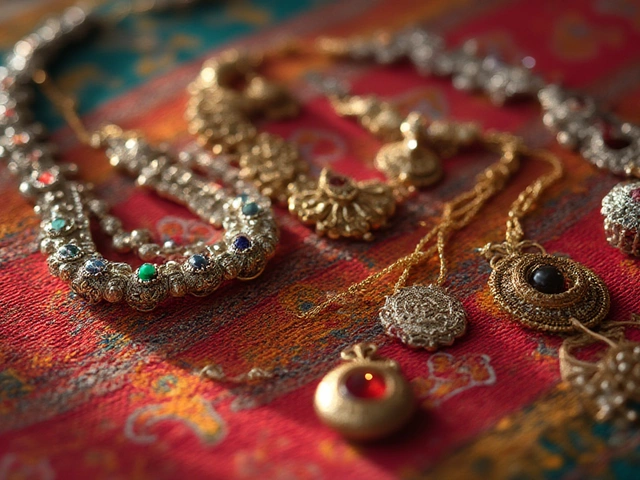Pawn Shop Jewelry: Quick Guide to Buying and Selling Smart
If you walk into a pawn shop looking for a shiny piece, you probably wonder if it’s a bargain or a trap. The good news is you can tell a lot with a few easy steps. This guide shows you how to spot real value, avoid common pitfalls, and walk away happy whether you’re buying or selling.
What to Look for Before You Buy
First, check the hallmark. In India, a gold piece should have a BIS stamp showing purity – 22K (916) or 18K (750). If the mark is missing, ask to see a certificate or a recent test report. Silver usually carries a ‘925’ stamp; anything else could be plated.
Next, weigh the item. Genuine gold is heavy. A cheap copy will feel light for its size. Use a digital kitchen scale if the shop doesn’t have one. Compare the weight to online tables that list the expected weight for a given karat and size.
Look for signs of plating. A magnet test is quick – real gold and silver won’t stick, but many plated pieces will. If a magnet clings, you’re probably looking at a base metal with a thin gold layer.
Inspect the setting and stones. Real diamonds have sharp edges, no oily film, and a faint sparkle when you move them. Use a jeweler’s loupe or a simple magnifying glass to check for cracks or missing prongs. Loose stones are a red flag.
Tips for Getting the Best Price When Selling
Before you hand over your jewelry, get an independent appraisal. Many pawn shops offer a quick estimate, but a certified gemologist can give you a documented value that you can use for negotiation.
Clean the piece gently with a soft cloth. Dirt and oils hide shine, making the item look less valuable. Avoid harsh chemicals – a mild soap and warm water rinse is usually enough.
Know the current market rates for gold and silver. Websites that track daily metal prices give you a solid baseline. Remember that pawn shops add a margin, so aim to sell at a price a little higher than the spot rate.
Package the jewelry nicely. A tidy presentation signals that you take care of your items, which can influence the dealer’s perception and price offer.
Finally, be ready to walk away. If the offer feels low, thank the clerk and explore other shops. Competition keeps prices honest, and you’ll often find a better deal just a few streets away.
Whether you’re hunting for a hidden gem or cashing in on a family heirloom, these simple checks make the pawn shop experience less risky. Keep the checklist handy, stay confident, and you’ll walk out with a fair deal every time.
Jewelry That Sells Best at Pawn Shops: Antique Designs That Shine
Ever wondered which jewelry pieces actually get snapped up at pawn shops? This article breaks down the specific antique jewelry designs that sell fast, and why buyers want them. Find out what makes these items valuable and how you can get a fair price. Plus, get practical tips for preparing your jewelry before you walk into the shop. If you've got a dusty drawer full of ‘maybe someday’ pieces, this will help you see which ones are secretly worth a mint.




